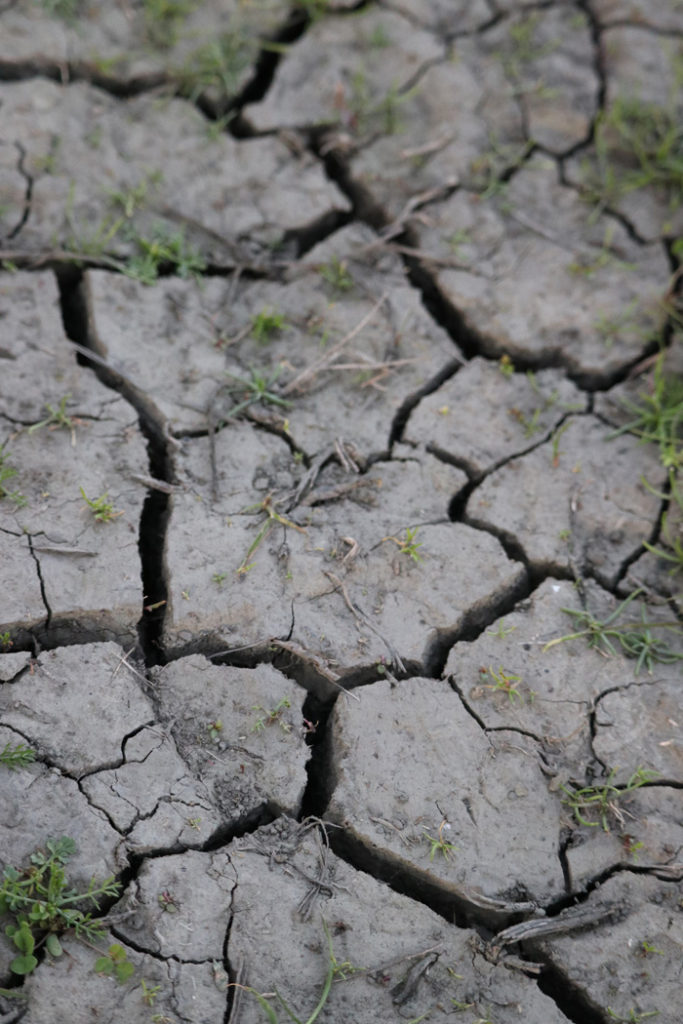Discover the Flyway from Home – Resources for Teachers, Parents & Students
Wetland Soil
Do you know what makes wetland soils different from other types of soil? Here is a picture of some soil in the Yolo Bypass Wildlife Area. What do you see?

Wetland soil is hydric soil. It doesn’t have any oxygen because it is saturated with water for long periods of time. You can tell a lot about soil by its color, texture and composition (what it is made up of). Soil is made up of different types and amounts of living and nonliving materials. For more information about soil composition, you can log into the National Geographic resource library with this link: https://www.nationalgeographic.org/encyclopedia/soil-composition/. Then see if you can answer these questions:
- Can you name one of the living or once living things found in wetland soils?
- Can you name one of the nonliving things found in wetland soils?
- What are the scientific words for living and nonliving things?
Bonus question: What color is wetland soil? Why?
Answers:
- Some of the living (or once living) things found in wetland soils include plants and insects.
- Nonliving things found in wetland soils include minerals and water.
- A scientific word for a living thing is biotic. A scientific word for a nonliving thing is abiotic.
- Bonus Question: Wetland soil is often greyish, with or without spots or blotches of orange or brown. This color change is due to a lack of oxygen (anaerobic) which reduces the amount of oxidized iron in the soil. sciencedirect.com/topics/earth-and-planetary-sciences/wetland-soil
Soil Layers
Soil is composed of both biotic—living and once-living things, like plants and insects—and abiotic materials—nonliving factors, like minerals, water, and air. https://www.nationalgeographic.org/encyclopedia/soil-composition/.